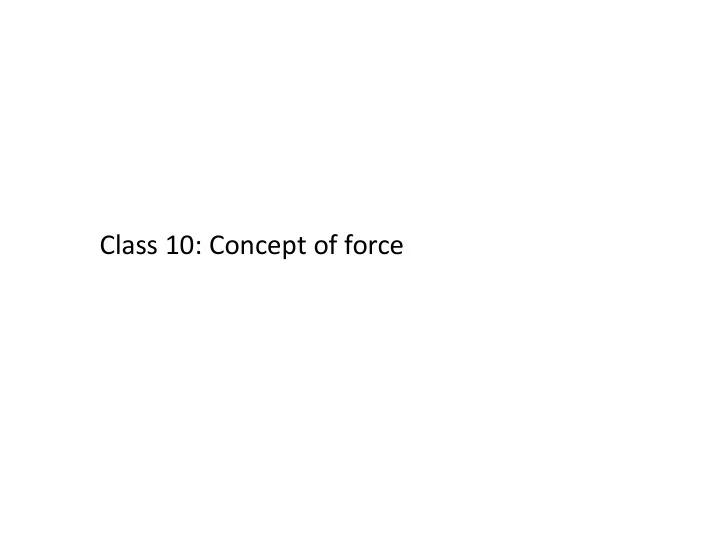

Class 10: Concept of force
Test 1 1. Next Wednesday (Feb 11) 11:00 ‐ 11:50 in this class room. 2. From beginning up to projectile motion. 3. No formula or cheat sheet. 4. 8 multiple choice problems (5 points each) and 2 long (30 points each) problems. Total 100 points. 5. Calculators allowed, but not the program function (though I don’t think it will help). 6. Please bring photo ID. 7. No reschedule of test even though you have more than two tests that day. 8. Next Monday classwork will be a multiple choice exercise on the test materials. This classwork will not be returned.
[Short version] Example 3 A block is fired up along a frictionless plane inclined at angle β , with an initial speed u. A ball is simultaneously thrown upward at angle θ (both β and θ are measured with respect to the horizontal). The objects start at the same location, as shown in the figure. What should be the initial speed of the ball (relative to ground) for the ball to land on the block? [Adopted from textbook “Problems and Solutions in Introductory Mechanics” by David Morin (problem 3.11), with modification to make it simpler.]
Obvious facts (Problems will not tell you about this) v y = 0 at the highest point (true Acceleration is constant, y for any projectile) perpendicular and towards ground (true for any projectile) v 0x g v 0 x O y = 0 when the projectile returns to the same level as the launching point (true only if the y axis is perpendicular to ground and y 0 = 0)
No so obvious facts (Problems will ask you to prove it but nice to know the results as a fact) Higher projectile will In this slide we spend more time in air assume the landing point is at the same level as the launching point. Time to go up = y g Time to come down For the same initial speed v 0 , launching angles and 90 o ‐ V 0 produce the same range R. v 0 90 o ‐ v 0x x O R For the same initial speed v 0 , v 0y launching angles = 45 o will y ‐ component of the landing velocity is the same as the y ‐ produce the longest component of the initial velocity, but opposite in direction.
Preparation for next class Starting next week In next class we will start with the concept of force, please read section 5.1. Force can be measured with a spring balance, which involve a knowledge in Hooke’s Law. For this please read section 7.4, pay special attention to equation 7.9. We have completed the foundation!
Hooke’s Law and spring balance F= - x Extension x Unit of force: Newton (N) L (natural length) Unit of spring constant k: Nm ‐ 1 F= - x Compression x
Difference between spring balance and balance scale
Recommend
More recommend